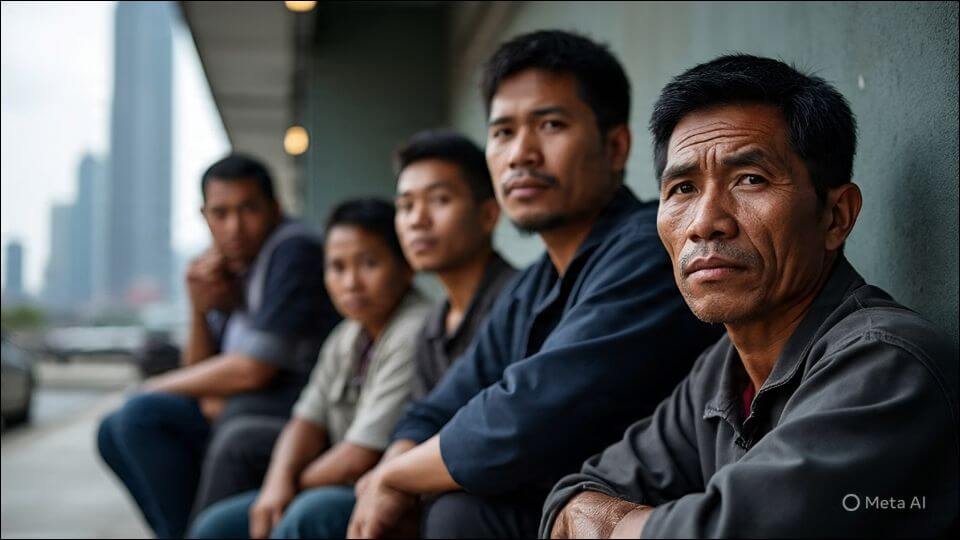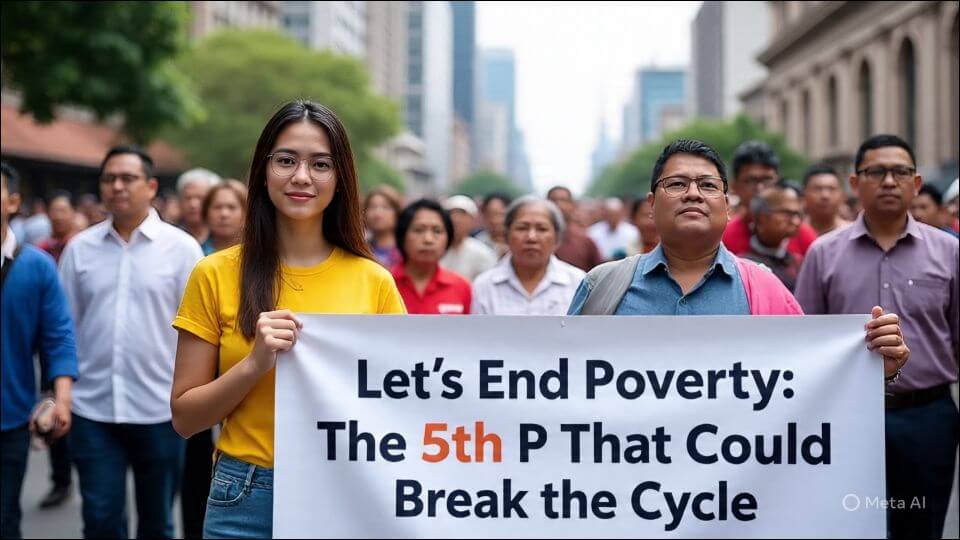💡 Introduction: The Problem Behind the Program
In the Philippines, “4Ps” typically refers to the Pantawid Pamilyang Pilipino Program, a government cash-transfer initiative meant to support the country’s poorest. But for the countless micro-entrepreneurs left out—sari-sari store owners, vulcanizers, bakers—it’s barely a whisper of help.
AIWhyLive introduced a new set of Real 4Ps for the AI era: • Product • Process • People • Place 👉 Recommended 4Ps Article
And later, we introduced the 5th P: Purpose as a weapon against poverty. But here’s the catch: If you’re excluded from cash aid and you fall victim to 5-6 lending schemes charging 20% interest monthly, you don’t get Purpose. You get Prank. 👉 Why the 5th P Is a Prank
These everyday entrepreneurs are often stuck in debt traps and algorithmic exploitation, offered nothing but payday loans and misleading digital ads that profit off their struggle.
👉 Read: Debt in the AI Era 👉 Read: Monetizing Stupid in the AI Age
📉 The 5-6 Cycle and How Algorithms Mirror Exploitation
For poor communities:
- Bank loans are out of reach
- 5-6 lending thrives, often charging ₱100 interest for every ₱500 borrowed
- AI tools used by payday lenders promote instant approval but hide abusive terms
Instead of solving poverty, tech can automate inequality. The algorithm just learns your desperation—and sells it back to you.
🧠 Rewiring Livelihoods with Practical AI
Here’s how we flip the script—not with rocket science, but street-level tools anyone can use:
1. 🧃 Smart Inventory Apps
- Use Case: Sari-sari store tracks which snacks sell fast, and what stock to order
- Tool Type: Free mobile apps like GrowSari, or text-based AI bots
- Result: Less spoilage, smarter reordering, better margins
2. 🚚 Mobile Market Price Alerts
- Use Case: Fish vendor sees price surge in nearby barangay
- Tool Type: Messenger bots that ping you about prices within 5–10 km
- Result: Sell when demand is highest, avoid middlemen
3. 💬 Community Lending Groups with AI Matching
- Use Case: Vulcanizing shops share supplier prices and flag scams
- Tool Type: Group chats + chatbot that tracks fair market prices
- Result: No more overpriced rubber, less dependence on 5-6 lenders
🪴 Simple Livelihood Framework: AI for Actual Income
We call this AI sa Kita. Here’s how it works in real life:
| Element | Meaning | Real-world Application |
|---|---|---|
| 🧃 Product | Tools you can use without training | Phone apps to monitor stock and sales |
| 🧵 Process | Easy even if you’re not techie | Text a sales update, get advice back |
| 🧑 People | Anyone can learn | Barangay demos for vendors and elders |
| 🏠 Place | Shared access points | Wi-Fi at barangay hall or co-op kiosk |
| 🛒 Platform | Community-owned networks | Group price trackers, AI moderators |
🐾 Final Thought: From 5-6 to AI for Kita
You don’t need perfect English, a startup pitch, or a master’s degree. You need tools that help, not trap.
AI should predict income, not poverty. It should boost your sales, not your debt.
If we build for micro-entrepreneurs—not just corporations—every bakery, sari-sari store, and vulcanizing shop can become a center of innovation.
Let’s move past the scam. Let’s move toward AI for Kita.
📚 Sources
- Pantawid Pamilyang Pilipino Program (4Ps) Overview – Official DSWD
- AIWhyLive: Politics Behind the 4Ps
- AIWhyLive: Real 4Ps for Change
- AIWhyLive: The 5th P – Purpose or Prank?
- AIWhyLive: Filipino Debt Traps in the AI Era
- AIWhyLive: Monetizing Stupid – How Creators Are Exploited
- GrowSari – Micro-retail Enablement for the Philippines
- TESDA – Digital Literacy and AI Training for Filipinos
- DICT – Digital JobsPH Training Program







